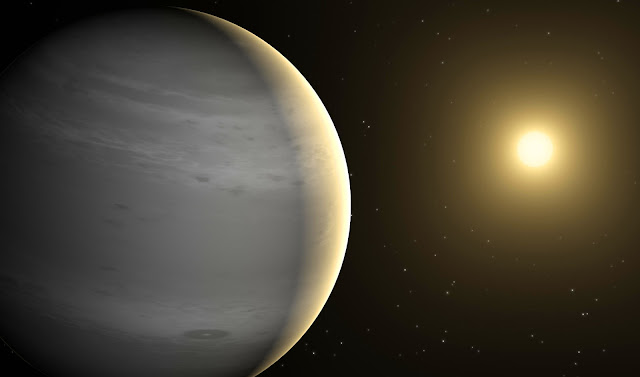Figure 1: Artist's impression of a planet orbiting a red dwarf star.
TRAPPIST-1 is an M8.0 ± 0.5 type red dwarf star located about 40 light years away. It has only ~1/2000th the Sun's luminosity, ~8 percent the Sun's mass, ~11.5 percent the Sun's radius, and its effective temperature is only 2550 ± 55K. For comparison, the Sun's effective temperature is 5778 K. TRAPPIST-1 is slightly larger in size than the planet Jupiter and its low effective temperature classifies it as an ultracool dwarf. Ultracool dwarfs are a class of stellar-like objects with effective temperatures below 2700 K. They include extremely low mass red dwarf stars and brown dwarfs.
Observations of TRAPPIST-1 revealed the presence of three transiting Earth-size planets in orbit around it. The three planets are identified as TRAPPIST-1b, TRAPPIST-1c and TRAPPIST-1d. The two inner planets, TRAPPIST-1b and TRAPPIST-1c, orbit interior to the habitable zone around the star. Nevertheless, both planets are expected to be tidally-locked, with a permanent day-side hemisphere and a permanent night-side hemisphere. As a result, they can still support habitable regions, especially in the temperate regions around the day-night terminator. For TRAPPIST-1d, there are a number of solutions that place it within or beyond the habitable zone of the star.
Figure 2: Transit photometry of the TRAPPIST-1 planets. Gillion et al. (2016)
TRAPPIST-1b has a 1.51 day orbital period, receives 4.25 ± 0.38 times the amount of flux Earth gets from the Sun, has 1.113 ± 0.044 times the radius of Earth, has a predicted equilibrium temperature between 285 to 400 K, and its mass is roughly estimated to be ~1.38 times the mass of Earth.
TRAPPIST-1c has a 2.42 day orbital period, receives 2.26 ± 0.21 times the amount of flux Earth gets from the Sun, has 1.049 ± 0.050 times the radius of Earth, has a predicted equilibrium temperature between 242 to 342 K, and its mass is roughly estimated to be ~1.15 times the mass of Earth.
TRAPPIST-1c has an orbital period between 4.55 to 72.82 days, receives 0.02 to 1.0 times the amount of flux Earth gets from the Sun, has 1.168 ± 0.068 times the radius of Earth, has a predicted equilibrium temperature between 75 to 286 K, and its mass is roughly estimated to be ~1.60 times the mass of Earth.
With a host star only slightly larger than the planet Jupiter, the planets around TRAPPIST-1 are well suited for atmospheric characterisation. This is because the strength of a planet's transit signal is inversely proportional to the square of its host star's radius. Barstow & Irwin (2016) presented a study showing that if present-day Earth levels of ozone are present on these planets, the upcoming space-based James Webb Space Telescope (JWST) would be able to detect it if JWST observes 60 transits for the innermost planet TRAPPIST-1b, and observes 30 transits for TRAPPIST-1c and TRAPPIST-1d.

Figure 3: Masses of the host stars and equilibrium temperatures of known sub-Neptune-sized exoplanets. The size of the symbols scales linearly with the radius of the planet. The background is colour-coded according to stellar mass (in units of the Sun’s mass). The TRAPPIST-1 planets are at the boundary between planets associated with hydrogen-burning stars and planets associated with brown dwarfs. Equilibrium temperatures are estimated neglecting atmospheric effects and assuming an Earth-like albedo of 0.3. The positions of the Solar System terrestrial planets are shown for reference. The range of possible equilibrium temperatures of TRAPPIST-1d is represented by a solid bar; the dot indicates the most likely temperature. Only the exoplanets with a measured radius equal to or smaller than that of GJ1214b are included. Gillion et al. (2016)
Figure 4: Potential for characterizing the atmospheres of known transiting sub-Neptune-sized exoplanets. Gillion et al. (2016)
References:
- Gillion et al. (2016), "Temperate Earth-sized planets transiting a nearby ultracool dwarf star", arXiv:1605.07211 [astro-ph.EP]
- Barstow & Irwin (2016), "Habitable worlds with JWST: transit spectroscopy of the TRAPPIST-1 system?", arXiv:1605.07352 [astro-ph.EP]








































